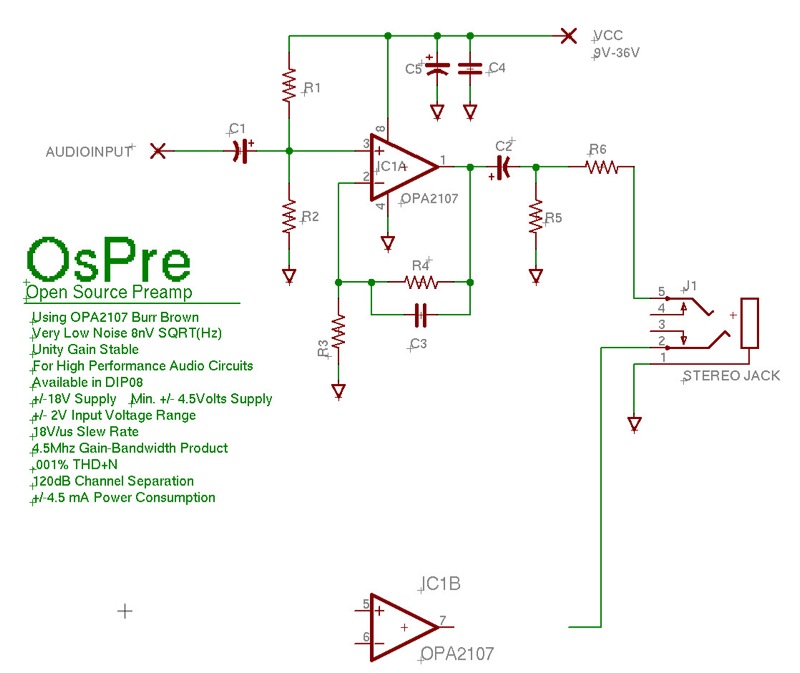In another thread, a member suggested that it will be cool if information and sharing is more open (with regards to schematics).
That got me thinking and think it will be a neat experiment. So I'm submitting "The OsPre"... the Open Source Preamp <whatever that means>
This is just a quick sketch done within the last hour, there are no values on the components, and it's not tested yet. If anybody want to contribute, suggest values, give values, create a shopping list of parts, etc... you're welcome to do it.
If you think there are better choices in opamps, feel free to suggest... I just picked this opamp from the TI website just browsing at the specs.
Goal:
2 channel simple preamp (i.e. preamp as in signal conditioning, more gain.)
Output: Stereo jacks unbalanced
Voltage supply: 9V or more
....
blah blah blah
....
<the rest... come up with it, or contribute and share the schematic >
....
Here's the initial seed file.

Some brief description:
C1, C2 = AC coupling capacitors
R1, R2 = for creating a virtual ground for single-ended supply operation
C4, C5 = PSU bypass capacitors
R6 = short circuit protection, in case output of opamp got shorted
R5 = load
R3, R4 = for setting gain of opamp
C3 = bypass capacitor
i.e. 6dB = 2x voltage ratio
20dB = 10x voltage ratio
40dB = 100x voltage ratio
IC1, IC2 = opamp
J1 = stereo jack output
Not included here:
- circuit for biasing electret mics, or phantom power for condenser mics
- no high pass filters or any of that
- no leds or vu metering
Let's see how far we get with this... okay, people... start contributing!